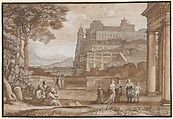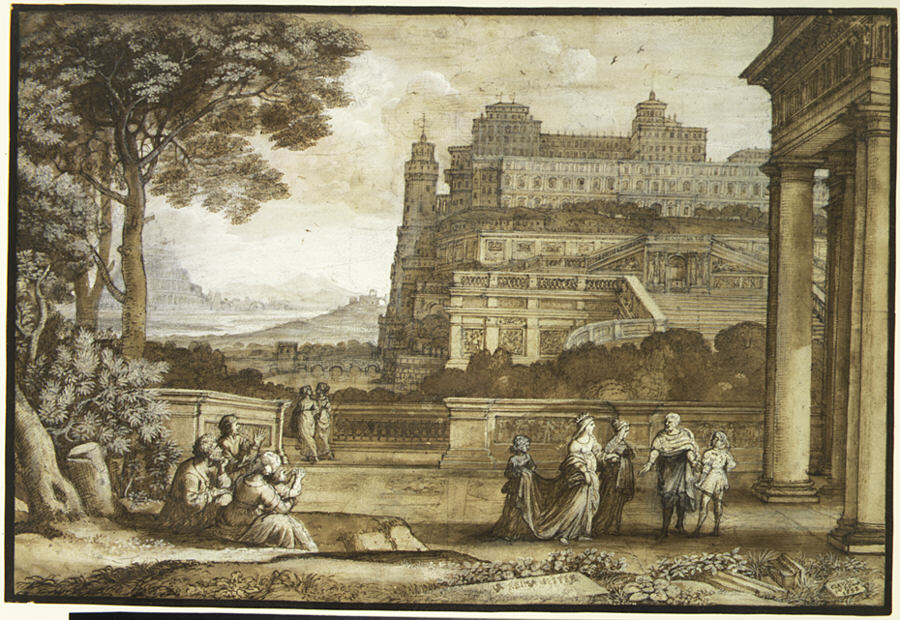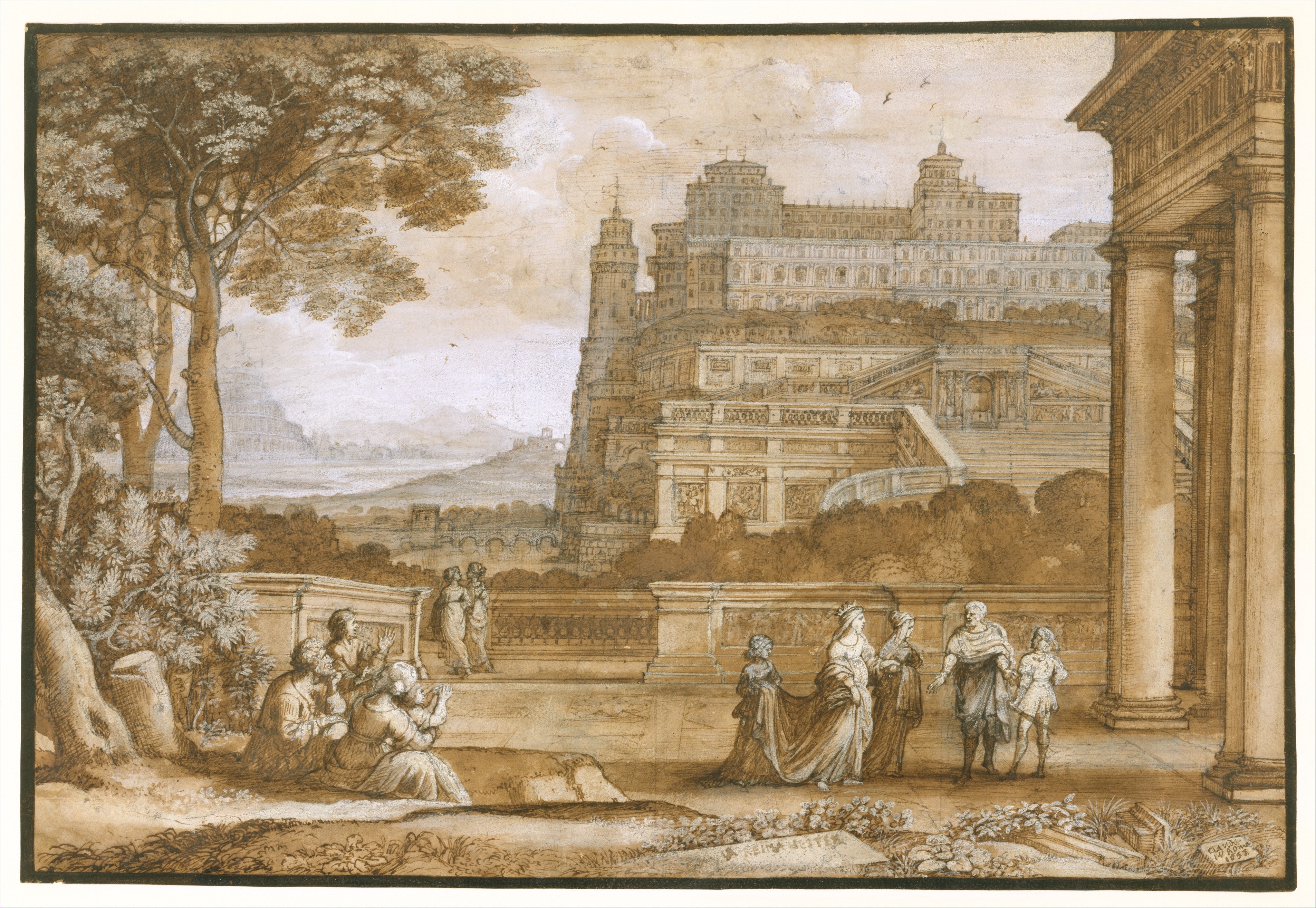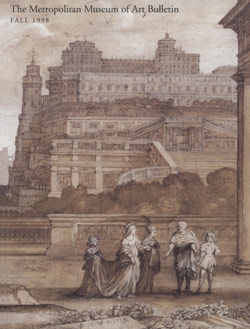Queen Esther Approaching the Palace of Ahasuerus
Claude Lorrain (Claude Gellée) French
Not on view
This magnificent compositional study, which came to light in the late 1980s, stands out in Claude's graphic oeuvre for its high degree of finish and detail. The biblical subject is set in an invented landscape animated by a diffuse naturalistic light. It was presumably made as a presentation drawing for François Bosquet, bishop of Montpellier, who had commissioned from the artist a pendant to his Sermon on the Mount (Frick Collection, New York). The resulting painting, considered by Claude to be his most beautiful, was later largely destroyed by fire (a fragment survives at Holkham Hall, England). Claude here depicts the Old Testament story of Queen Esther, who went to the king's palace to implore mercy for her condemned people. As uninvited appearances before the king were forbidden under penalty of death, Esther collapsed in fear as she neared his throne, a scene commonly depicted by Baroque artists. By choosing instead the moment of Esther's approach to the palace, which is not described in the biblical text, Claude has shifted the focus from the clemency of the king to Esther's act of bravery when its outcome was still unclear.
Due to rights restrictions, this image cannot be enlarged, viewed at full screen, or downloaded.
This artwork is meant to be viewed from right to left. Scroll left to view more.






















